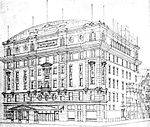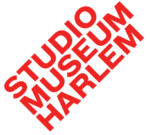Education in Harlem

Education in and around the neighborhood of Harlem, in Manhattan, New York City, is provided in schools and institutions of higher education, both public and private. For many decades, Harlem has had a lower quality of public education than wealthier sections of the city. It is mostly lower-income. But also check out the Harlem Children's ZoneFor purposes of this article, the modern boundaries of greater Harlem are considered to be West 110th Street, Fifth Avenue, East 96th Street, the East River, the Hudson River, and 155th Street, although some variation occurs with the southwestern boundary. This area includes both the neighborhood of Harlem itself, as well as the adjacent neighborhoods of East Harlem, Manhattanville, and Hamilton Heights.
Excerpt from the Wikipedia article Education in Harlem (License: CC BY-SA 3.0, Authors, Images).Education in Harlem
Adam Clayton Powell Jr. Boulevard, New York Manhattan
Geographical coordinates (GPS) Address Nearby Places Show on map
Geographical coordinates (GPS)
| Latitude | Longitude |
|---|---|
| N 40.809033333333 ° | E -73.948372222222 ° |
Address
Adam Clayton Powell Jr. Boulevard (7th Ave)
Adam Clayton Powell Jr. Boulevard
10039 New York, Manhattan
New York, United States
Open on Google Maps







